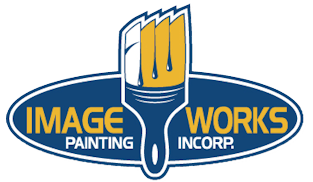House Painters Pro Tips: Masking Tapes & Films
Jeremy Holderness I don't think anyone would argue that protecting surfaces and furnishings when painting a room, or even the outside of your home, is a much better idea than having to launch a major clean-up effort after the fact.
I don't think anyone would argue that protecting surfaces and furnishings when painting a room, or even the outside of your home, is a much better idea than having to launch a major clean-up effort after the fact.
I've been in this industry for a couple of decades now and when I walk down the masking isle of my local paint store I still find the selection to be overwhelming. I can't imagine what goes through a homeowner's mind when they're in that situation, especially when most of the employees working behind the counter don't seem to have any more experience with painting than you do.
So today I thought we'd discuss some of the options that're available to you in masking tapes, masking films, and masking paper.
Masking Tapes
Believe it or not, there are still some hold-outs when it comes to using blue painter's tape rather than your basic white masking tape. Maybe it's because the blue stuff is more expensive, maybe some people just don't know what the benefits of using it are, or maybe they've had a bad experience with it.
In my experience there are definite benefits that painter's tape offers over traditional masking tape that easily justify the additional cost. But what I believe most people don't understand is that there are several different types of painter's tape, and if you don't choose the right one for your particular application you could be throwing your money away.
There are multiple brands of painter's tape out there, so for sake of discussion I will focus on 3M/Scotch brand since it is probably the most widely-available, and arguably some of the highest quality stuff you'll find on the shelf.
Original Multi-Use 2090 (White Label)
This is the most commonly-used tape in their blue line. It has a medium level of adhesion and up-to 14 days of clean removal time. It's especially good for heavily textured walls and ceilings, carpet, and unfinished woods.
Advanced Multi-Surface 2093EL (Green Label)
This also has a medium level of adhesion with up-to 14 days of clean removal time. It's especially good for smooth surfaces such as trim, baseboards, metal, and glass.
Advanced Delicate Surfaces 2080EL (Orange Label)
This tape has a low-to-medium level of adhesion with up-to 60 days of clean removal time. It is ideal for applying over freshly-painted surfaces as new as 24 hours old. It's also great for ceiling tiles, vinyl-coated wallpaper, paneling, finished hardwood, and cabinets with paper or veneered laminates. It's a popular choice for faux-finish painters.
Exterior Surfaces 2097 (Black Label)
This tape has a waterproof backing and a very high adhesion level which makes it great for exterior surfaces. Despite the strong adhesive qualities it can be removed clean for up-to 7 days. It works well on marble, slate, stone, concrete, glass, porcelain, vinyl, metal, and wood.
Regardless of which tape you use for your project, there are a couple of tips that you can apply to give you the best results.
Once your tape is secured to the surface, use a putty knife or a 5-in-1 painters tool to 'set the edge' by applying pressure to the edge of the tape while sliding your tool along the length of the strip. This will help to keep your paint edges sharp by reducing the amount of paint that can seep underneath.
Use care when removing your tape to avoid peeling your newly painted surface. When paint is applied overtop of the edge of the tape it will dry and bridge the gap between the tape and the surface the tape is applied to. If you aren't careful you can actually peel some of your new paint off along with the tape. Try removing your tape while the paint is still wet when possible. If not, remove the tape at a 45 degree angle away from the painted surface at a moderate speed. You can also take a razor knife and score along the edge if you still see any peeling of paint.
As long as you use the right kind, using painter's tape will give you the ability to protect surfaces from being accidentally painted without having to deal with a difficult removal, or remaining adhesive residue which you would commonly have with traditional masking tape.
Masking Devices, Films, & Paper
Why walk when you can run? If you've always wanted to try using an airless paint sprayer to paint your home, what're you waiting for?
One of the biggest concerns that I hear when it comes to homeowners attempting spray painting is overspray. Won't I get overspray on the the windows, the patio, the car, the neighbor's house, etc?
While those are all valid concerns, if you take the time to educate yourself about airless paint sprayers, protect your surrounding surfaces, and do a couple practice runs, spraying versus brush & rolling can increase your application speed dramatically.
However, if you don't take advantage of some of the wonderful masking technology, you could end up spending so much time masking your windows, doors, etc that all of the time you save spraying may end up being lost to prep work.
These handy devices allow you to load your painter's tape and your plastic masking film onto the machine which attaches the tape to the edge of your film as as you roll along and apply the film to the surfaces you want to protect, which speeds up the prep time significantly.
Painter's poly film -- also referred to as 'tape & drape' -- comes in rolls of various widths that can be loaded onto your hand masker. Once it's been applied you just unfold it and tape down the remaining edges. It works well for large areas that you need to cover, such as windows, doors, etc.
Masking paper works much in the same way on a hand masker -- or not -- that masking film does. It also comes in various widths, but the main differences are that it is a little thicker and more durable than the plastic typically is, and it is rolled in a single layer so there's no unfolding once it's applied. It's ideal for masking smaller areas when more controlled spray work is being done.
I hope this article helps to clear-up some of the mystery that surrounds masking products. Using the right products in the right application just like professional house painters do can save you tons of time and headache on your next exterior or interior painting project.
If you need assistance with your painting project, please give us a call at (813) 570-8800 or visit our Contact Us page to schedule a free consultation and quote, or simply click on the button below to have us call you.
photo by: Andrew Malone / CC BY 2.0







